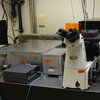
About eLIFE:
"eLife is a non-profit organisation created by funders and led by researchers. Our mission is to accelerate discovery by operating a platform for research communication that encourages and recognises the most responsible behaviours.
We work across three major areas:
1. Publishing – eLife reviews selected preprints in all areas of biology and medicine, while exploring new ways to improve how research is assessed and published.
2. Technology – eLife invests in open-source technology innovation to modernise the infrastructure for science publishing and improve online tools for sharing, using and interacting with new results.
3. Research culture – eLife is committed to working with the worldwide research community to promote responsible behaviours in research."

Unveiling the Role of SNUL RNAs in Ribosomal RNA Expression Regulation

Researchers investigate neuron differentiation in fruit fly brains

Neuroscientists uncover new neuronal circuitry that controls auditory sensory perception

Stadtmueller Lab determines the structure of our predominant mucosal antibody

Researchers uncover the role of a noncoding RNA in cell proliferation

New optogenetics study shows promising results for neuronal regeneration

New approach drives bacteria to produce potential antibiotic, antiparasitic compounds
